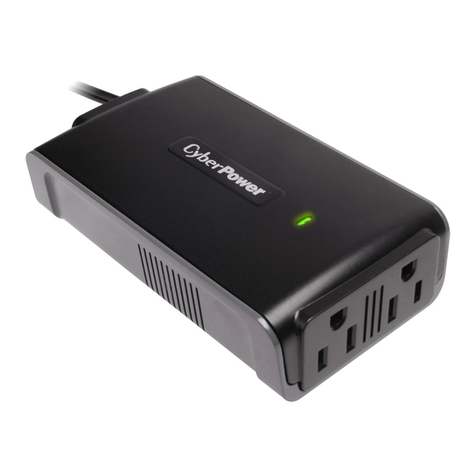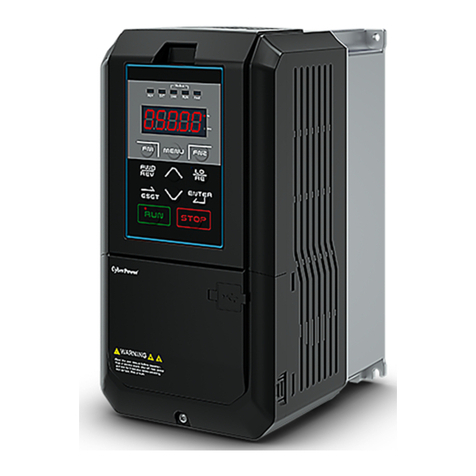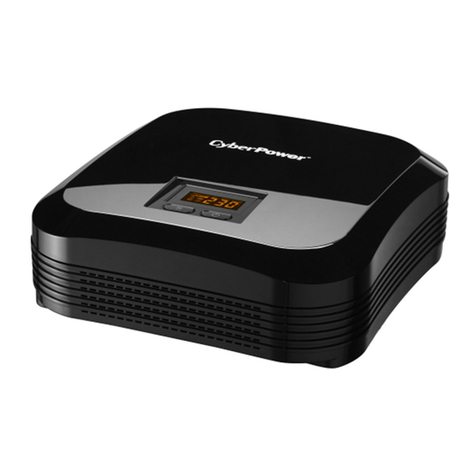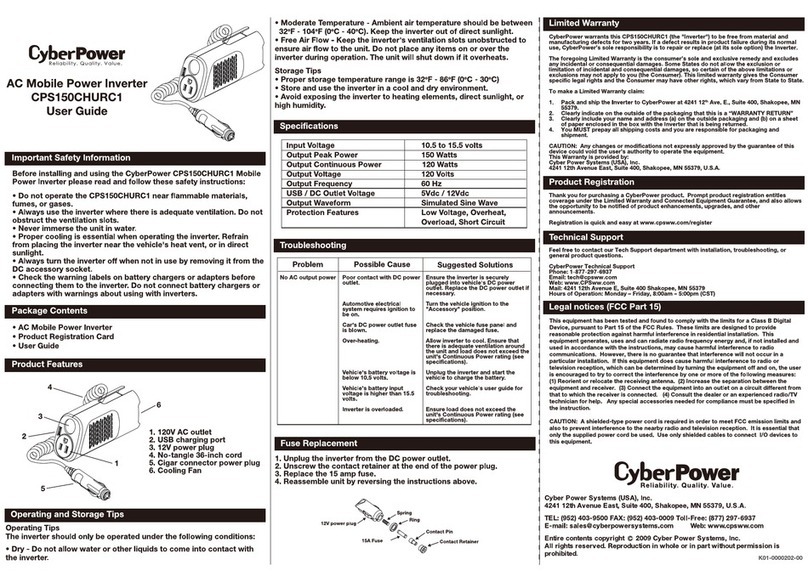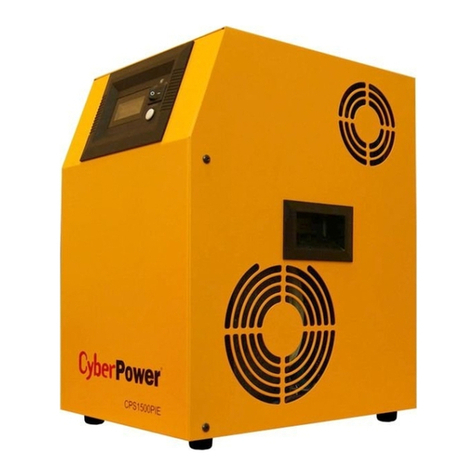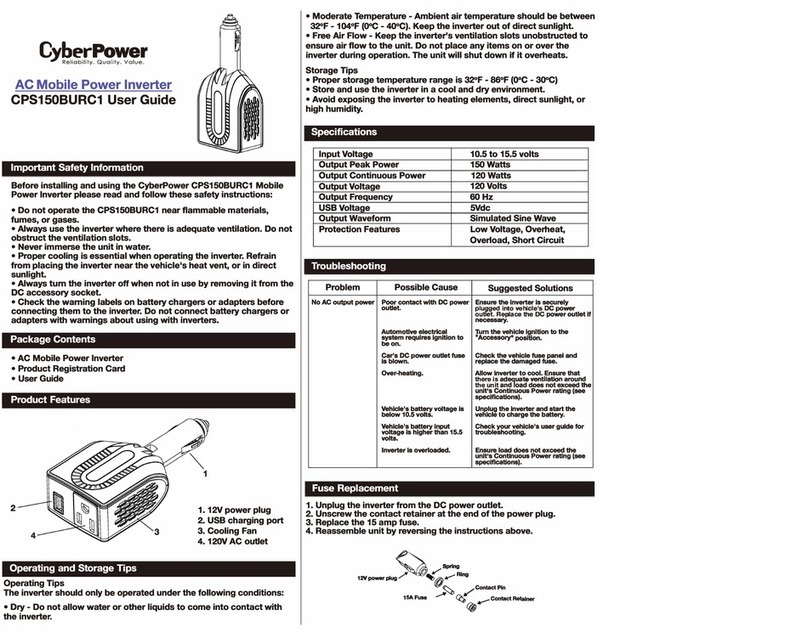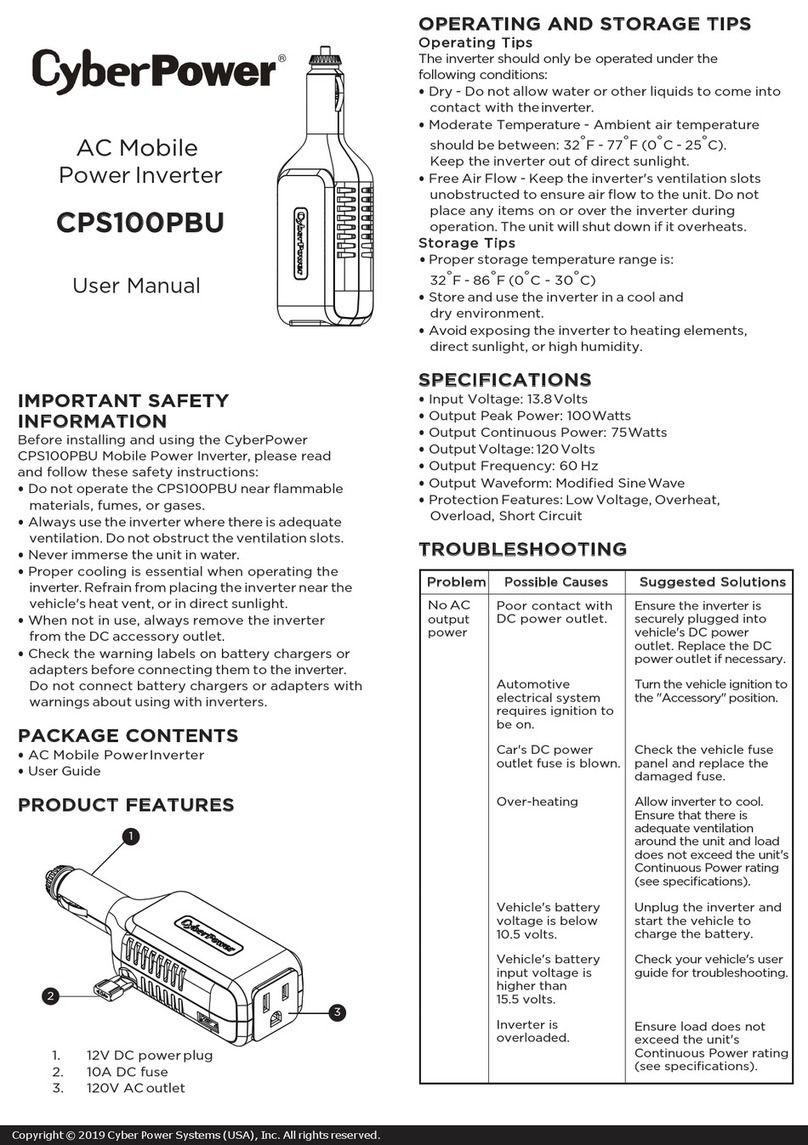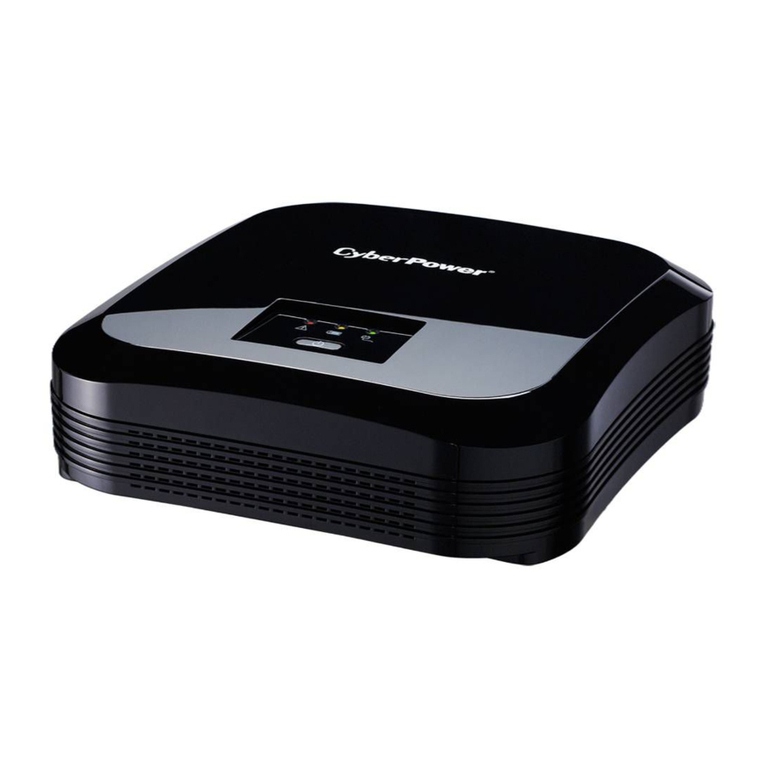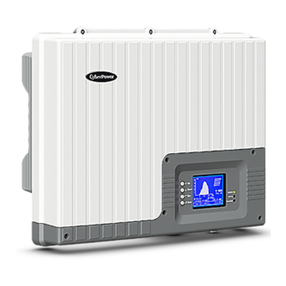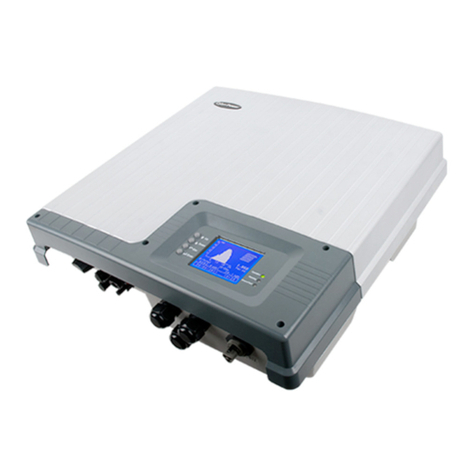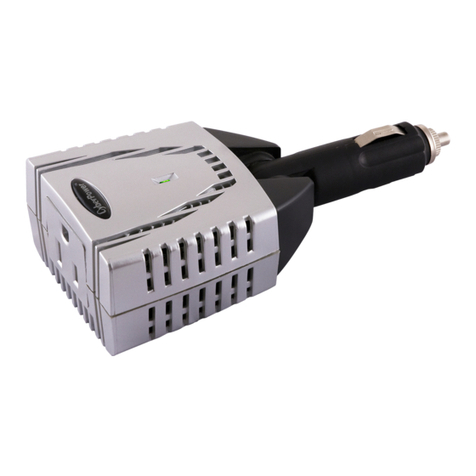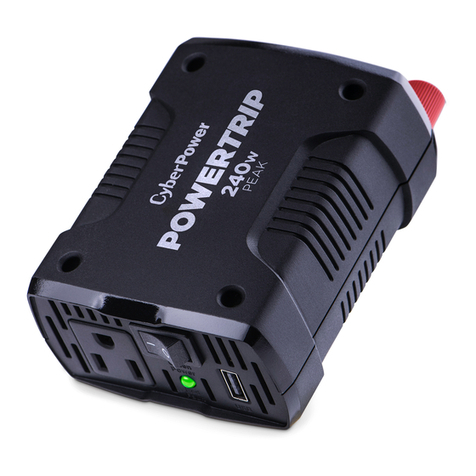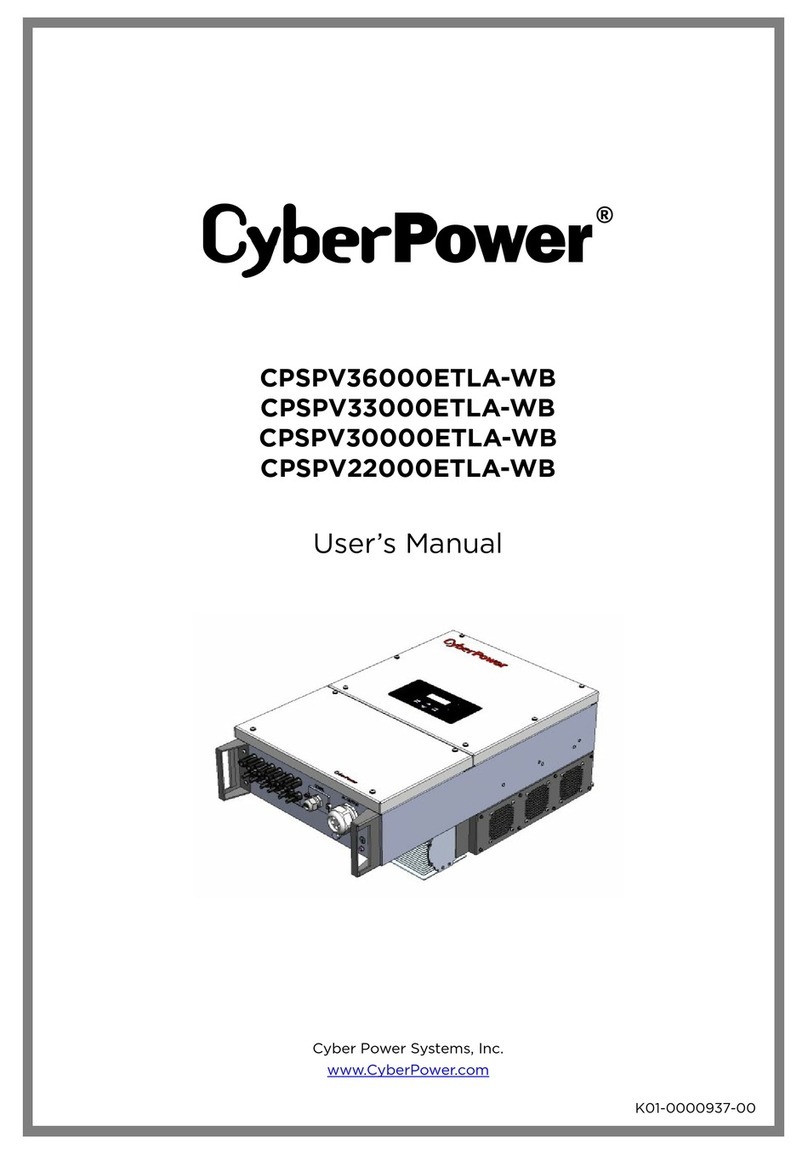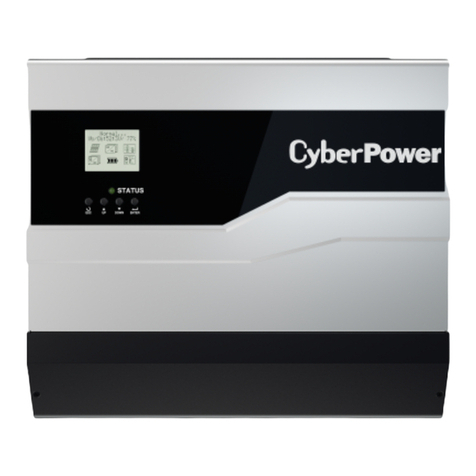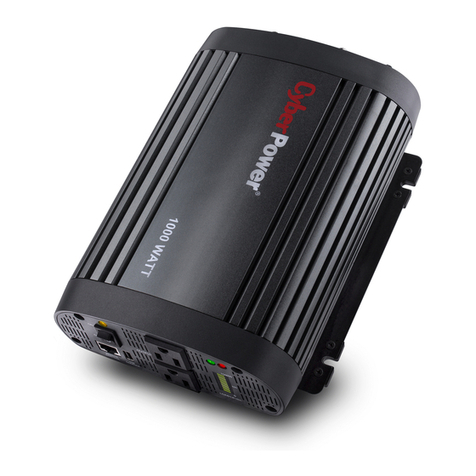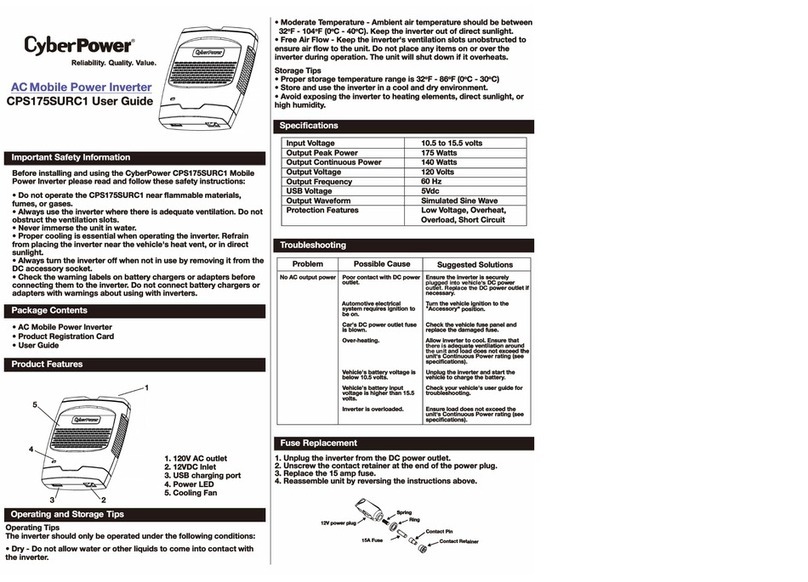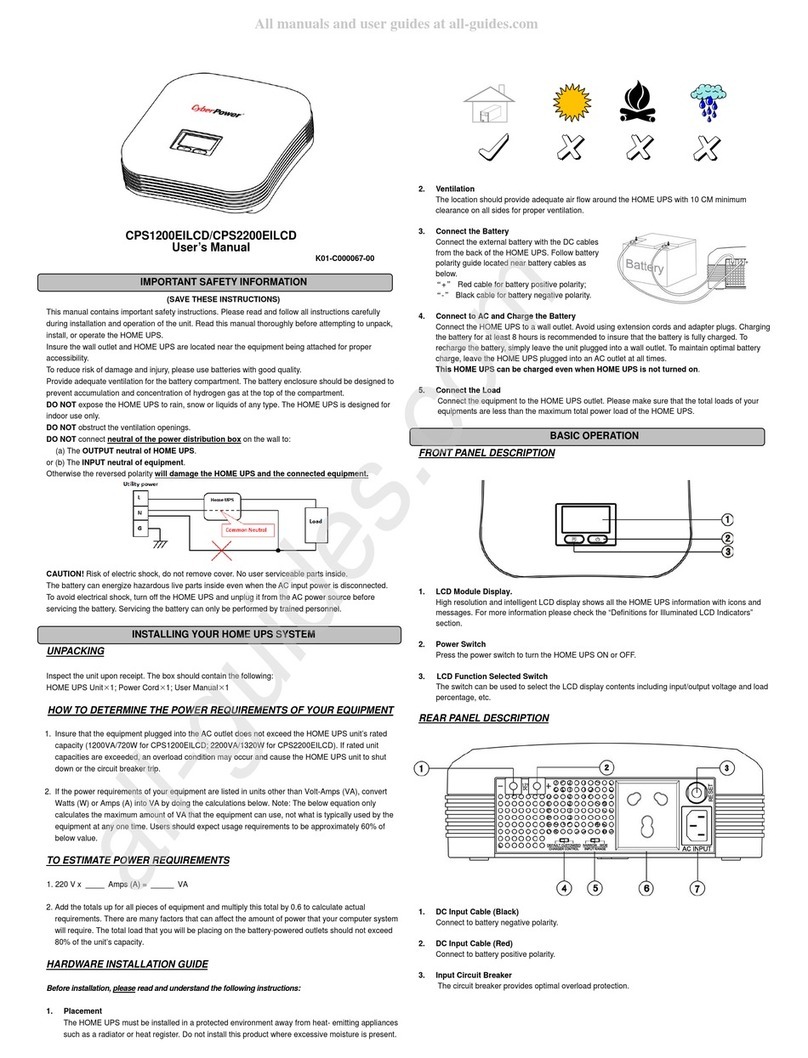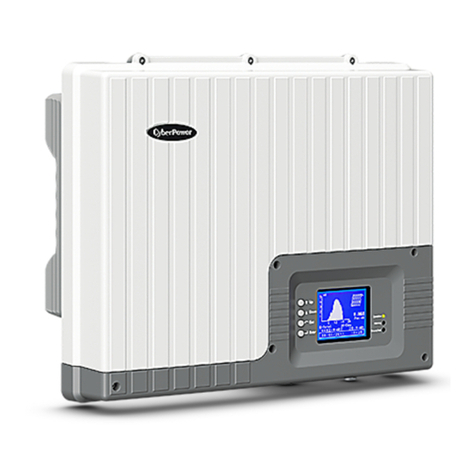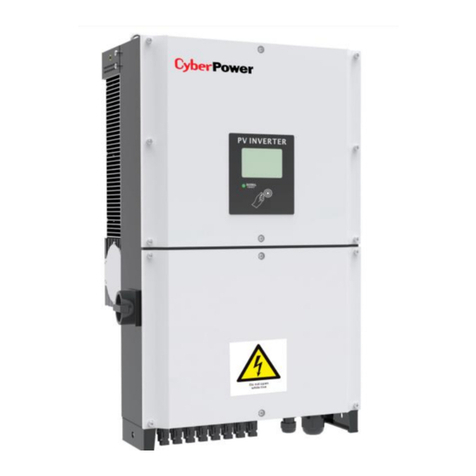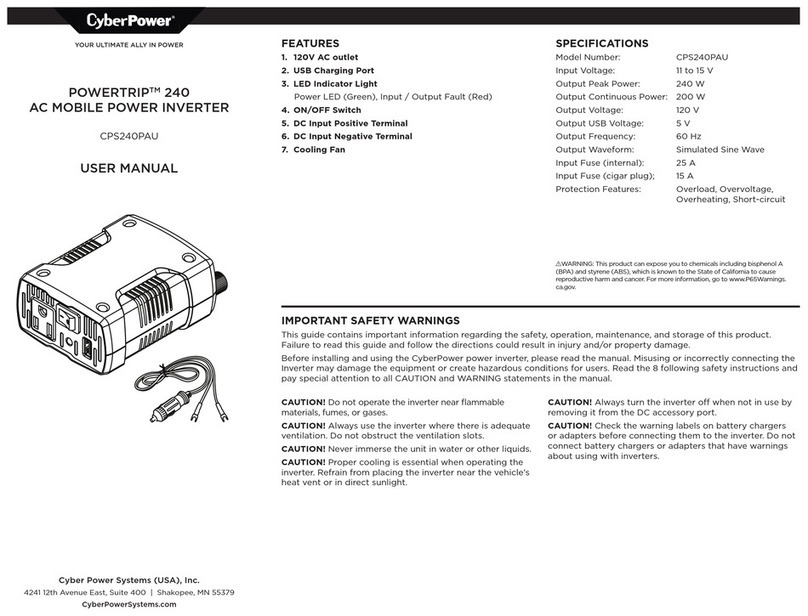
FOR MORE INFORMATION
Visit CyberPowerSystems.com for more information regarding:
• Product information and certifications
• Product warranty
• Connected equipment guarantee
TECHNICAL SUPPORT
Visit: CyberPowerSystems.com/support
Toll-Free: 1-877-297-6937
Hours of Operation: Monday - Friday: 7:00am - 6:00pm CST
© 2023 Cyber Power Systems (USA), Inc. All rights reserved.
All other trademarks are the property of their respective owners.
CONFORMANCE APPROVALS
This device complies with Part 15 of the FCC Rules.
Operation is subject to the following two conditions:
(1) this device may not cause harmful interference, and (2) this
device must accept any interference received, including interfer-
ence that may cause undesired operation.
This equipment has been tested and found to comply with the
limits for a Class B digital device, pursuant to Part 15 of the FCC
Rules. These limits are designed to provide reasonable protection
against harmful interference in a residential installation. This
equipment generates, uses, and can radiate radio frequency ener-
gy and, if not installed and used in accordance with the instruc-
tions, may cause harmful interference to radio communications.
However, there is no guarantee that interference will not occur
in a particular installation. If this equipment does cause harmful
interference to radio or television reception, which can be
determined by turning the equipment o and on, the user is
encouraged to try to correct the interference by one or more of
the following measures:
• Reorient or relocate the receiving antenna.
• Increase the separation between the equipment and receiver.
• Connect the equipment into an outlet on a circuit dierent
from that to which the receiver is connected.
• Consult the dealer or an experienced radio/TV technician
for help.
WARNING: Changes or modifications not expressly approved
by the party responsible for compliance could void the user’s
authority to operate the equipment.
The CPS480TG2U/B inverter contains protection fuses.
Two on the inverter body and the other on the cigar plug
cable to protect the unit against overloading. If the inverter
draws more than 150 watts via the cigar plug connection,
or more than 480 watts via the battery clamp connection,
the internal fuse may open to protect the inverter, vehicle
battery, and the connected equipment.
To replace the fuse, please followthe instructions below:
1. Turn o the inverter and disconnect any devices from
the inverter.
2. Disconnect the inverter from power source and remove
the leads.
3. Pull the fuse straight out of the holder.
4. Replace with a new 25-amp fuse in the inverter body or a
20-amp fuse located inline on the cigar plug cable.
DC FUSE REPLACEMENT
1. Place the inverter on a flat
surface on your vehicle floor.
2. Make sure the power switch
on the panel is o.
3. Take the power cord
equipped with the cigar
plug and place the
ringterminals over the two
cabling terminals on the
back of the inverter.
4. Place the inverter cigar plug
in the vehicle cigarette lighter
socket.
5. Turn on the power switch. The green light indicates that the
inverter is operating normally and that AC power is available
at the outlet.
6. Verify that the connected device(s) draws less than 150
watts and plug into the AC outlet.
7. Always turn the inverter o when not in use.
CAUTION - Make sure you connect cable red to red and black to black, and make
sure you screw the nuts on tightly.
CAUTION - Use the cigar plug cable only when the vehicle’s engine is running.
CAUTION - Use the cigar plug cable with the engine o will cause excessive
TM480 User Guide battery drain.
BASIC OPERATION - Loads Under 150W
1. Place the inverter on a
flat surface.
2. Make sure the power switch
on the panel is o.
3. Take the power cord equipped
with battery clamps on one end
and place the ring terminals over
the two cabling terminals on the
back of the inverter.
4. Fasten the positive (red)
clamp to the positive battery
post, and thenfasten the negative
(black) clamp to the negative
battery post.
5. Turn on the power switch. The
green light indicates that the inverter is operating
normally and that AC power is available at the outlet.
6. Take device power cord plug into the inverter
AC outlet.
7. Always turn the inverter o when not in use.
CAUTION - A reverse polarity connection (positive to negative) will blow a fuse
in the inverter and may permanently damage the unit. Damage caused by a
reverse polarity connection is not covered by your warranty.
WARNING - Batteries contain corrosive materials and present an electrical shock
hazard. To prevent irritation and burns, wear protective eyewear and clothing
when you install the inverter or work with the batteries. Take special care to en-
sure that metal tools and personal metal objects like rings and bracelets do not
contact the battery terminals.
BASIC OPERATION - Loads Over 150W
CAUTION
1. Connect the RED
cable to the POSITIVE
terminal of the battery.
2. Connect the BLACK
cable to the NEGATIVE
terminal of the battery.
CAUTION
1. Connect the RED cable to
the POSITIVE terminal of
the inverter.
2. Connect the BLACK cable
to the NEGATIVE terminal
of the inverter.
The inverter should only be operated under the
following conditions:
• Dry - Do not allow water or other liquids to come into
contact with the inverter.
• Moderate Temperature - Ambient air temperature should
be between 32 °F - 104 °F (0 °C - 40 °C). Keep the
inverter out of direct sunlight.
• Free Air Flow - Keep the inverter’s ventilation slots
unobstructed to ensure air flow to the unit.
• Do not place any items on or over the inverter during
operation. The unit will shut down if it overheats.
• Proper storage temperature range is
32 °F - 122 °F (0 °C - 50 °C).
• Store and use the inverter in a cool and dry environment.
• Avoid exposing the inverter to heating elements, direct
sunlight, or high humidity.
OPERATING AND STORAGE TIPS
TROUBLESHOOTING
Cigar Plug Cable
Fuse Holder
25 amp Fuse
20 amp Fuse
Inverter Body
Problem Possible Cause Solution
No AC output
Red LED lit
DC input is below
11 Vdc or over 15 Vdc
Check your battery volts and
recharge or replace the battery.
Short Circuit Disconnect the load.
Overload Reduce the load.
Inverter hot Disconnect the load and operate
the inverter for a few minutes.
No AC output
Green LED
not lit
Bad connection or
wiring Tighten all DC connections
Fuse is blown Check fuse and replace or call
service.
Motorized
power tool will
not operate.
Excessive startup
load. If the start up
load exceeds the
inverter’s peak load
capability it will
not work.
Disconnect the load until the
inverter operates normally and
connect the load again.
